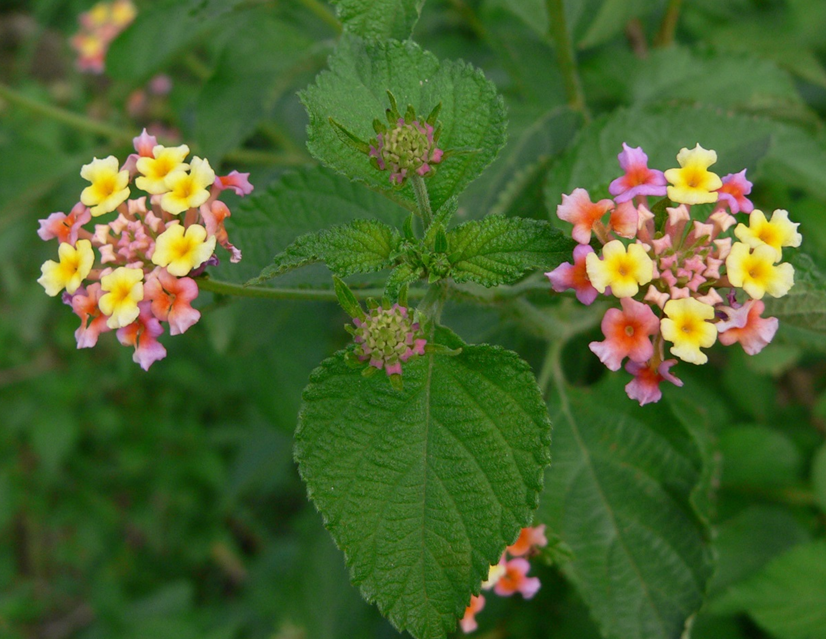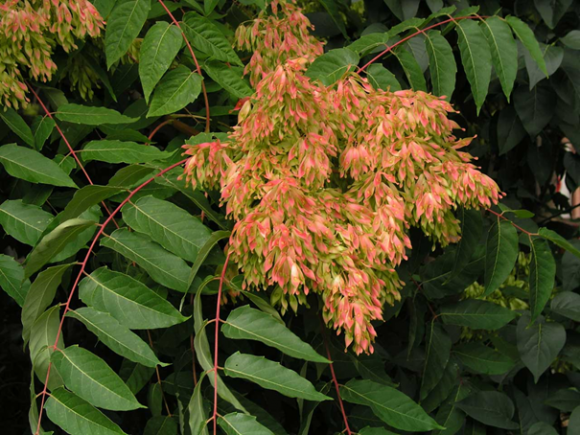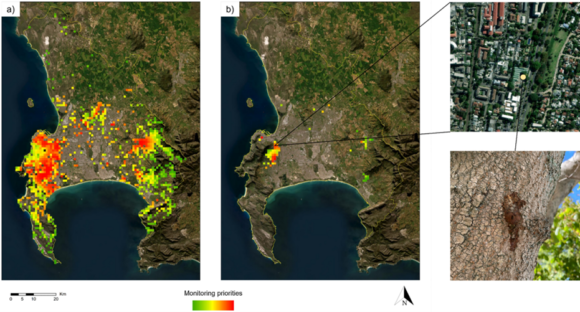22 April 2015 | By Sabrina Kumschick
Knowing which species to manage amongst all the species introduced outside of their native ranges is a huge challenge. Many factors play a role in the decision making process, one of the most important ones being whether or not the alien species causes harm to native ecosystems and species, or damages the economy. However comparing impacts between species with very different life histories, such as harlequin ladybirds, prickly pear cactus and common myna, is not a straightforward task. It means wanting to compare impacts of the ladybird diminishing native species through predation, the cactus causing injuries in livestock and humans due to its spines, and the common myna occupying breeding holes of endangered native species and eating their food. Basically it means wanting to compare apples and oranges.
A research team including C·I·B researcher and core team member Sabrina Kumschick has developed a generic impact scoring system which allows translating these diverse impacts into a common currency and comparing them directly. The impact scoring system describes environmental and socio-economic impacts using twelve categories. In each category, impact scores range from zero (meaning no impact detectable) to five (the highest possible impact at a site). All impacts found in the literature can be assigned to one of the categories and scores, and due to the verbal descriptions attached to each score the process has shown to be robust between assessors.
In a recent study, Sabrina Kumschick, C·I·B associate Petr Pyšek, and their collaborators from Switzerland, Spain, the Czech Republic and UK have used the scoring system to assess and compare impacts of 300 species belonging to five major taxonomic groups alien to Europe consisting of 26 birds, 34 mammals, 35 fish, 77 terrestrial arthropods and 128 plants. The study is published in the Journal of Applied Ecology.
When looking at the total impact over all twelve categories, the brown rat and the Canada goose reach the highest scores, both major pests to agriculture and a human nuisance. The highest scoring plant alien to Europe is lantana, which is poisonous to humans and animals and responsible for livestock losses also in South Africa. The varroa mite found to be the most destructive arthropod causes both, environmental and socio-economic impacts mainly due to its devastating effects on honeybees.
Comparing between taxonomic groups, mammals generally had the highest impact scores, whereas fish scored rather low. Interestingly, plants have high environmental impacts, but score low in the socio-economic sector. Furthermore, different taxa affect the recipient systems in different ways. By far the most important mechanism for fish to cause impact is through predation, for which the largemouth bass in the Rondegat river in South Africa, where many endemic small fishes live, is a good example: its name speaks for itself.
Hybridisation is an important impact of birds, since many ducks and geese do not respect species boundaries when it comes to reproduction. The mallard duck, not part of this study as native to Europe but a good example of the problem, has caused devastating effects on endemic native ducks in other parts of the world due to its aggressive mating behaviour and the resulting mixed offspring.
The authors of the study in Journal of Applied Ecology suggest that:
- The scoring system presented is useful for policy makers and to produce prohibited lists of alien species
- It presents a tool that can aid management prioritisation regardless of taxonomic affiliation
- Future studies should try and incorporate traits potentially linked to the observed impacts, which has been done for mammals and birds, for other taxa as well which could lead to a more precise prediction of harmful alien species

Read the papers:
- Kumschick S, Bacher S, Marková Z, Pergl J, Pyšek P, Vaes-Petignat S, van der Veer G, Vilà M & Nentwig W (2015) Comparing impacts of alien plants and animals using a standard scoring system. Journal of Applied Ecology DOI: 10.1111/1365-2664.12427
- Kumschick S, Bacher S, Dawson W, Heikkilä J, Sendek A, Pluess T, Robinson TB & Kühn I (2012) A conceptual framework for prioritization of invasive alien species for management according to their impact. NeoBiota 15: 69-100
- Kumschick S & Nentwig W (2010) Some alien birds have as severe an impact as the most effectual alien mammals in Europe. Biological Conservation 143: 2757-2762
- Kumschick S, Bacher S & Blackburn TM (2013) What determines the impact of alien birds and mammals in Europe? Biological Invasions 15: 785-797
- Evans T, Kumschick S, Dyer E & Blackburn TM (2014) Variability of impact correlates between continents for birds: significance for risk assessment and management. Ecology and Evolution 4: 2957-2967
For more information, contact Sabrina Kumschick at sabrinakumschick@sun.ac.za



